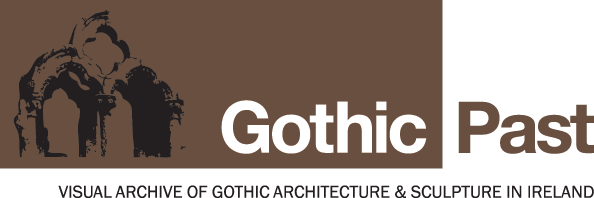Browse Items (8 total)
Sort by Title [A-Z] | [Z-A]
St. Sepulchre's Archiepiscopal Palace, Hugh Inge's Door, jamb and arch
Door jamb and arch moulding comprising: hollow chamfer, quadrant. The door was inserted by Archbishop Hugh Inge in 1523 and restored in the eighteenth century. Fragments of window found during recent excavations have the same scale moulding and are likely to associated with the door. The door is unusual in that it has a three centred head.
St. Margaret's Church, Finglas, door jamb, arch and hood
Jamb arch and hood moulding. From intrados, jamb moulding comprises:quadrant, hollow chamfer, quadrant. The splayed jamb and hood are separated by a small hollow. The hood, from outside in, comprises: angle-fillet, angle-fillet, angle-fillet, angle-fillet.
St. Audoen's church, Dublin, south nave wall, door jamb and arch
Door in south nave wall, jamb and arch moulding comprises: hollow chamfer, spike, hollow chamfer.
St. Audoen's church, Dublin, Portlester chapel, arcade capital
Portlester chapel arcade capital. Moulding from top comprises: abacus, hollow, roll, bell, necking roll. The components are very broad.
St. Audoen's church, Dublin, Portlester chapel, arcade base
Base moulding of Portlester Chapel arcade. Moulding comprises: necking roll, bell, scroll, plinth. The mouldings are very broad.
St. Audoen's church, Dublin, Portlester chapel arcade arch
Portlester chapel arcade moulding, from bottom to top moulding comprises: fillet, double ogee, fillet, hollow chamfer, right-angled rebate, hollow chamfer, quadrant, hollow chamfer. Only the bottom half of the moulding appears in the drawing. The use of the double ogee is rare in Ireland.
St. Audoen's church, Dublin, architectural fragments, window
Window fragment. Moulding comprises: frontal fillet flanked at either side by a roll, and larger roll. This looks like a fragment of the windows in the south wall of the Portlester Chapel.
Dunsoghly Castle Chapel, door jamb, arch and hood
Door jamb, arch and hood of the detatched castle chapel. Jamb and arch moulding from intrados comprise: hollow chamfer, right-angled rebate, quadrant. The hood, which is placed at some distance from the jamb, comprises from outside in: frontal fillet, hollow chamfer, right-angled rebate, hollow chamfer.








